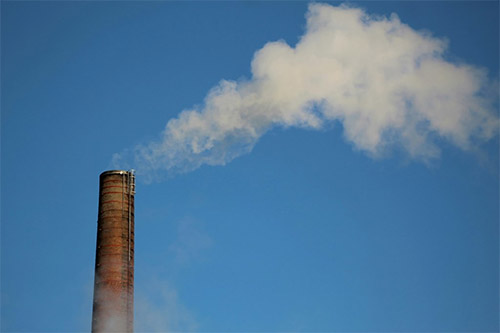
GENEVA, Sept 5 (NNN-AGENCIES) — Fine particle air pollution declined in Europe and China last year as emissions linked to human activity dropped, the United Nations said in a report published on Thursday.
Nanoparticles known as PM2.5 — due to their size smaller than 2.5 micrometres in diameter — pose a severe health risk if inhaled over long periods of time as they are tiny enough to get into the bloodstream.
The particles come from human activity like the combustion of fossil fuels, transportation and industry, as well as wildfires and wind-blown desert dust.
“The 2023 data shows a negative anomaly, which means a drop in PM2.5 compared to the reference period of 2003-2023 over China and Europe,” said Lorenzo Labrador, a scientist at the World Meteorological Organisation (WMO).
The UN agency, in an annual bulletin published ahead of International Day of Clean Air for Blue Skies on Sept 7, stressed that air quality and climate change were closely linked.
“Climate change and air quality cannot be treated separately. They go hand-in-hand and must be tackled together,” WMO Secretary General Ko Barrett said in a press release.
The chemicals responsible for atmospheric pollution, WMO stressed, are usually emitted at the same time as greenhouse gases.
“A vicious cycle of climate change, wildfires and air pollution is having a spiralling negative impact on human health, ecosystems and agriculture”, it said.
Nine out of 10 people breathe highly polluted air, according to the World Health Organisation.
The UN weather agency, using data from NASA and the European Union’s Copernicus Atmosphere Monitoring Service, noted that PM2.5 reached levels higher than average in India due to human and industrial activity.
Fine particle levels were up on the Indian subcontinent and some parts of Southeast Asia, said Labrador.
China and Europe, however, recorded levels lower than average, said the WMO.
“We tend to think that the decline in pollution in Europe and China is the direct result of lower emissions in these countries over the years,” said Labrador.
That is a rather unsurprising finding for scientists at the WMO, he says, who have noticed this trend since they first published the bulletin in 2021.
While Labrador said air pollution in the United States maintained a “status quo”, North American wildfires in 2023 caused “exceptionally strong emissions” compared to the two previous decades, the report said.
The organisation also reported dust emissions lower than usual in the Arabian Peninsula and North Africa. — NNN-AGENCIES






